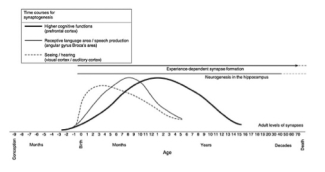
Empty windows of opportunity?
October 26, 2016
John T. Bruer, Brookings Nonresident Senior Fellow, Economic Studies, Center on Children and Families, recently wrote about the seductive appeal of brain science in assuring optimal brain development and life-long wellbeing. He noted that “The advocacy literature tends to tell only half of the story about the effects of experience on synapse formation. The full story raises doubts as to how much specific guidance neuroscience can provide policy makers about what should go into those windows of opportunity.”
We often hear that brain science has established the importance of early windows of opportunity during brain development that can be exploited to assure optimal, life-long development. Although neuroscience has established the existence of a few such windows, it is largely silent about what we should put in them. The relevant brain research does not provide much specific guidance to policy makers and educators.
“Policymakers should be aware that (i) brain science might tell us that windows of opportunity exist, but it cannot now tell us what to put in them and (ii) windows of opportunity are at best only half of the developmental story.”
The neuroscience is summarized in the figure below. Between birth and adolescence, depending on the brain area, the number of synapses grow in excess of adult levels, then are eliminated, until synaptic densities settle at mature levels. Critical or sensitive periods tend to occur during these periods of synaptic excess. These are the windows of opportunity nature provides.

Some presentations of the science (e.g., The National Research Council–Institute of Medicine’s From Neurons to Neighborhoods) provide a highly qualified discussion: the human data are limited; most data derives from studying animal sensory systems; the finding may not be generalizable to all brain development; sensitive periods are largely unexplored in humans.
These presentations also address the phenomenon of life-long, experience-dependent synaptic change (shown at the top of the figure) that allows us to learn throughout life. The policy literature tends to drop the qualifications and to ignore the implications of life-long neural change.
In contrast, scholarly treatments caution that we are largely ignorant of which specific experiences–and when–matter during development, and that we should not focus on sensitive periods at the expense of life-long learning. Thus, policymakers should be aware that (i) brain science might tell us that windows of opportunity exist, but it cannot now tell us what to put in them and (ii) windows of opportunity are at best only half of the developmental story.
To see the full paper, Windows of opportunity: Their seductive appeal, visit the Brookings website here.
About NIEER
The National Institute for Early Education Research (NIEER) at the Graduate School of Education, Rutgers University, New Brunswick, NJ, conducts and disseminates independent research and analysis to inform early childhood education policy.
